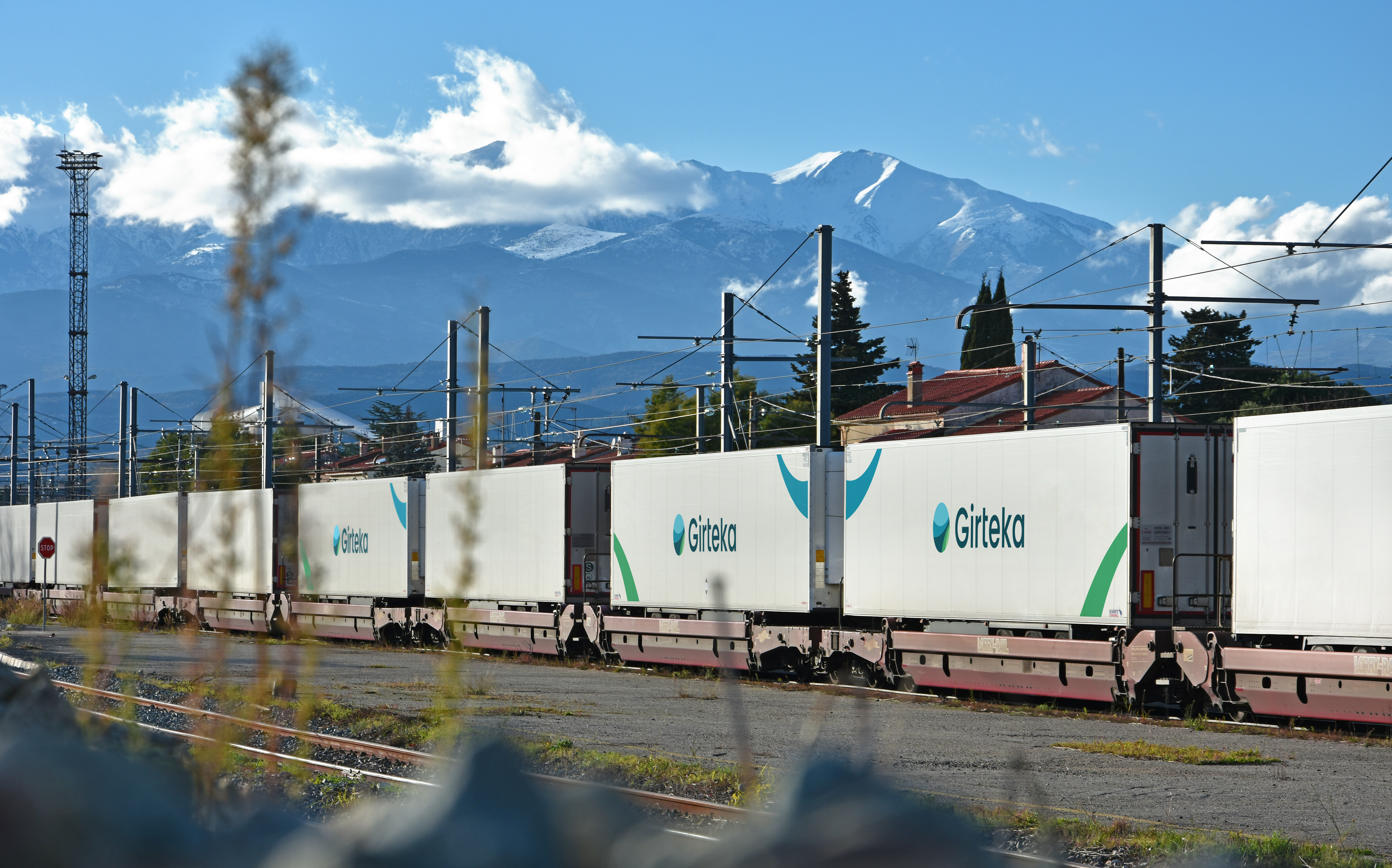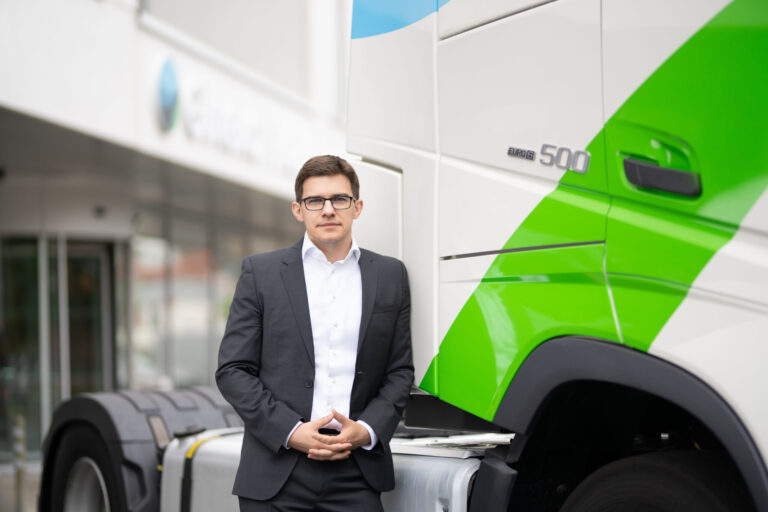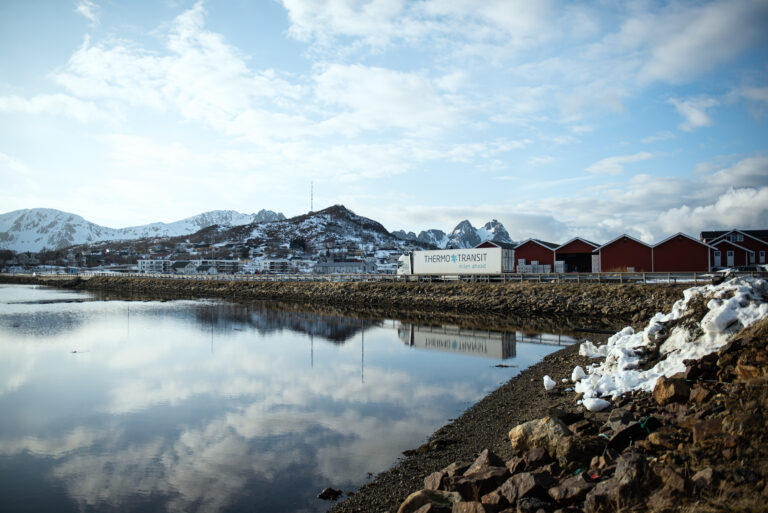Share it:
While Girteka is traditionally a road-focused company with a fleet of over 6,000 trucks and 7,000 trailers, its development of an intermodal rail network has become an integral part of its business offering. Intermodal services provide a complementary, environmentally friendly solution to long-distance full truckload (FTL) deliveries, addressing both sustainability and efficiency goals.
Legislative Support and the Barriers to Intermodal Transport Development
Intermodal transport is increasingly recognized as a green complement to road transport. However, 78% of freight deliveries are still conducted by road, with less than 6% utilizing rail. To address this imbalance, the European Union has set ambitious targets to shift more freight to rail – 30% by 2030 and 50% by 2050. The European Commission’s ‘Greening Freight Transport Package’ supports this shift by promoting intermodal transport, cleaner fuels, and improved road delivery efficiency.
The Role of Rail Transport in Decarbonizing Logistics
Intermodal rail transport is among the most environmentally friendly methods for long-distance cargo movement, potentially reducing CO2 emissions by up to 90% compared to road transport. Girteka’s own efforts reflect this potential: in 2022, the company achieved a reduction of over 16.7 million kg of CO2 emissions by utilizing rail for over 16.22 million kilometers. While these results are commendable, Girteka recognizes that there is still room for growth in maximizing the environmental benefits of its intermodal services. Throughout 2023, Girteka sustained its use of intermodal lanes, delivering comparable results.
In 2024, Girteka continued to expand its intermodal services, increasing the volume of goods transported by rail. However, the company acknowledges that engaging more customers and shifting perceptions of intermodal transport as a reliable option remains an ongoing challenge.
“We are constantly working to improve our intermodal rail services and to engage customers who may have previously seen this mode of transport as unconventional or unreliable,” says Larisa Senkevičienė, Intermodal Business Development Manager, at Girteka.
Extensive Route Network, Cargo Types, and Collaborative Partnerships
Girteka has developed an extensive intermodal network in Western Europe, primarily focusing on electrified routes. The company strategically expands lines in regions with the highest shipment flows, particularly in Spain, Italy, and Central and Northeastern Europe. Key partnerships with Helrom, CargoBeamer, CFL and Lorry-Rail & VIIA Rail Motorways have been crucial in this development. For instance, Girteka’s collaboration with VIIA has grown significantly, from carrying less than 1,000 loads in 2017 to over 10,000 loads annually today.
In collaboration with its partners, one of the largest carriers operates services to, from, and through key destinations such as Kaldenkirchen, Düsseldorf (Germany), Nassjo/Katrineholm (Sweden), Bettembourg (Luxembourg), Vienna (Austria), Domodossola, Bari (Italy), Poznan (Poland) and Le Boulou and Calais (France). The types of cargo transported across these routes include temperature-controlled food products, high-value goods, and other specialized freight that require tailored handling and monitoring. With the integration of Real-Time Visibility (RTV) systems, customers can monitor their shipments continuously, ensuring transparency and reliability throughout the supply chain
Across these routes, Girteka has already driven millions of kilometers, achieving significant CO2 savings. For example, the Kaldenkirchen-Domodossola route alone saved over 6 million kg of CO2, while the Bettembourg-Le Boulou and Le Boulou-Calais lanes saved more than 8.3 million kg. In total, Girteka’s intermodal operations have contributed to a reduction of over 17 million kg of CO2 emissions in 2023, underscoring the environmental benefits of these services. This extensive network and the impressive mileage covered reflect Girteka’s commitment to expanding its intermodal capabilities and providing sustainable, efficient transport solutions across Europe.
Trucks on the Tracks and Broader Impacts
Company’s journey from an intermodal pioneer to a specialist highlights the broader potential of intermodal transport. This approach reduces carbon footprints and addresses industry challenges such as the need for greater operational efficiency.
Girteka’s intermodal services are designed as a powerful complementary solution that supports customers in decarbonizing their transport and supply chains. As the logistics industry prepares for the widespread adoption of new truck technologies, Girteka’s intermodal offerings provide an immediate and effective way to reduce emissions. By shifting a significant portion of freight from road to rail, Girteka helps its customers reduce their carbon footprint, and thanks to digitalized information flow provide also accurate data. This approach addresses the pressing need for sustainability and aligns with the environmental goals of customers, offering them a proactive way to meet emerging regulatory requirements and contribute to a greener future.
As Europe’s largest intermodal refrigerated carrier, Girteka is focused on expanding its intermodal services and finding new ways to grow. The company knows that being flexible and resilient is key, especially in today’s challenging geopolitical and economic climate. By staying innovative and working closely with partners, Girteka is dedicated to building a more sustainable and efficient future for logistics—showing that it’s possible to be both environmentally responsible and successful in business.



